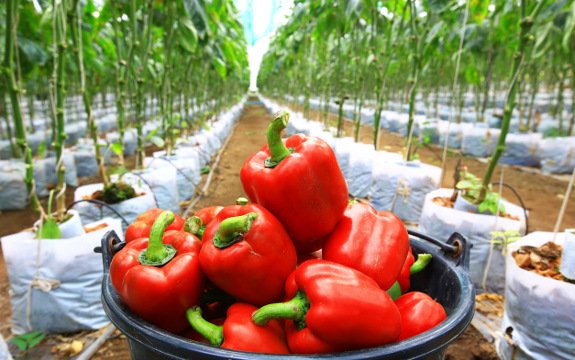Want to Garden, But Have No Land? 3 Steps to Using Containers

 Whether you live in a city condo with a south window, or a suburban apartment with a deck, you don’t need to have a sprawling backyard or acreage to get in on growing your own food. On the contrary, container gardens can be budget- and space-friendly, while providing a bountiful harvest.
Whether you live in a city condo with a south window, or a suburban apartment with a deck, you don’t need to have a sprawling backyard or acreage to get in on growing your own food. On the contrary, container gardens can be budget- and space-friendly, while providing a bountiful harvest.
Most of the fruits and vegetables in your grocery store have traveled thousands of miles to reach you. In fact, the average plate full of food on an American table travels 1500 miles on average before being eaten.
In order to survive the journey, they’ve been sprayed and bred to withstand bumps, drops, and extra-long transit times. One of the side effects of this is they taste nothing like they should. The more out of season your fruit or vegetable is for your geographic region, the further it’s had to travel and the more likely it’s faced some sort of treatment to survive the journey.
You can seek out only in-season produce and even buy from stores that support local growers, but nothing quite compares to produce you can grow yourself.
Step One: Find the Containers
If you’ll be growing on a patio, you can use pots from your local garden center, or just about anything you can repurpose to hold some soil and crops. Just remember, your container needs holes for drainage, so if it doesn’t come with any, you’ll need a drill.
Read: 5 Easiest Vegetables to Grow Without Gardening Skills
If you’re hoping to grow indoors, consider window baskets that can hang either outside or inside your bright window. You can turn them to the outside on warmer days and bring them in when the weather is questionable. (Indoor growing requires a very bright window and south-facing windows are best.)
Step Two: Choose Your Plants
The plants you choose depend largely on how much light they’ll be able to receive. If your deck or window receives all-day sun, you can go with tomatoes, peppers, cucumbers, and other heat- and sun-loving crops. But if sunshine is limited, stick with lettuce, kale, herbs, radishes, and those who don’t need full-day sunshine.
Start with seeds if you are feeling ambitious, or visit a local grower for starter plants.
Step Three: Get Your Soil and Plant Your Garden
Big box stores usually carry organic potting mix. For container gardens, you’ll want a potting mix, not necessarily a garden soil. You can also find potting mixes like this at greenhouses. If you compost, work some of your composted mix into the soil before planting.
All plants are different, so do some research on the water and sunlight needs of your container crops. All gardeners make mistakes. Don’t get discouraged if you run into problems; it’s a learning process.

Three steps to planting a container garden? Get some containers, plants and soil? What kind of article is this? This is like a dumb 9 year-old’s book report. The author should write for ehow.com.
Absolutely, great tips for urban gardeners! You might want to also consider using plastic planters over stone or terra cotta simply because they are so much lighter and easier to transport and move around.